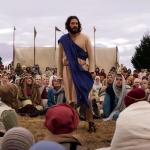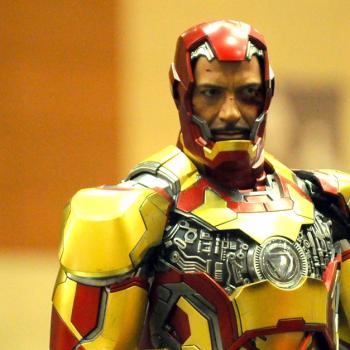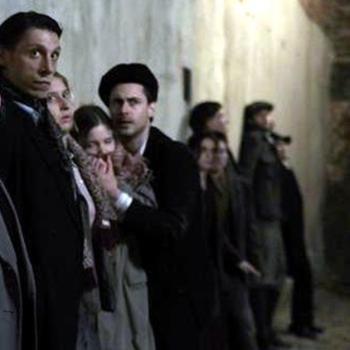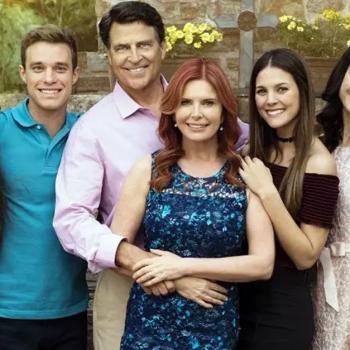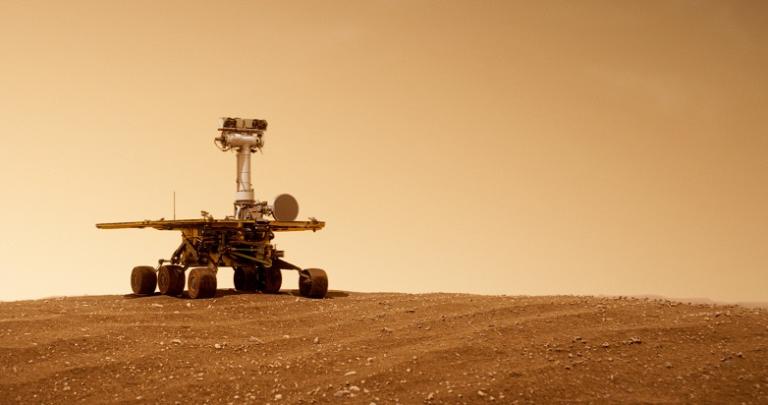
Currently in select theaters and arriving on Amazon Prime Video on Nov. 23, Good Night Oppy may make you proud, may fill you with wonder, and almost certainly will have you reaching for a tissue at the end.
Produced by Steven Spielberg’s Amblin Entertainment, directed by Ryan White, and narrated by Angela Bassett, the feature-length documentary tells the story of Opportunity, one of two sister rovers that landed on Mars in January 2004.
(I call them “sisters” because the team at NASA’s Jet Propulsion Laboratory, a k a JPL, consistently refers to Opportunity and Spirit throughout the film as “she.”)
The rovers were intended for a 90-day mission, but far, far outlasted that. Opportunity, the title character of Good Night Oppy, wound up surviving for 15 years.
“Hey, Space Guy!”
I admit to a bit of a personal history with this story. Not long after I moved to L.A. in 2002, I was at the biannual TV Critics Association Press Tour, at a press conference for a PBS NOVA episode focusing on the Mars rover mission.
Out in the hallway later, I spotted scientist Steve Squyers, who was on the panel (and who is featured, with a bit more gray hair, in Good Night Oppy). Unable to recall his name (we have a LOT of sessions in a day), I called out, “Hey, Space Guy!”
He was good-humored about that, fortunately. Explaining I now lived in L.A., I asked if one could visit JPL, since it’s located in the L.A.-area community of La Cañada Flintridge. He took my card and said he’d get back to me.
A Space Geek Visits Mars Rover HQ at JPL
Several months later, I was invited to be the lone American in a November 2003 junket of international journalists visiting JPL. For a space geek like me, this was Christmas, Disneyland and my birthday, all rolled into one.
Here’s some of what I wrote at the time (as published in the Los Angeles Times in January 2004):
On hand were all the mission’s major players, including Squyres, principal scientific investigator and a Cornell astronomer with an evangelical enthusiasm for his job, and Gentry Lee, an author, scientist and futurist whose involvement in the search for life on Mars stretches to Viking in the mid-1970s.
Tucked in the foothills of the San Gabriel Mountains, JPL’s sprawling grounds could be mistaken for a college campus, a military base or a movie studio. Buildings spanning 60 years are jumbled along winding, tree-shaded roads.
A newer building houses the spaceflight operations facility for the rovers, a sleek room done in violet, gray and white with rows of flat-panel computer workstations and pull-down projection screens.
A cramped 1940s building houses a compact lab for robot design; it contains rock-studded inclines and two test “sandboxes” that simulate Martian landscapes.
More impressive is the large “sandbox” in a vaulted room with a glassed-in viewing gallery. On the red sand, surrounded by rocks and camouflage netting, sits a test version of the new rovers. At once sturdy and spindly, the six-wheeled vehicles resemble an unlikely marriage of a Tonka truck and a bug, with their solar panels spread out like dragonfly wings and a tall mast topped by high-resolution cameras.
At the time, Squyers said:
“I think the credibility of the Jet Propulsion Laboratory is at stake,” scientist Steve Squyres says in “Mars Dead or Alive,” an episode of PBS’ “Nova,” premiering Sunday. “I think the credibility of NASA’s Mars program is at stake. A … lot of science is at stake. The last 10 or 15 years of my career is at stake, from a purely personal perspective.”
I suspect that both Squyers’ and JPL’s reputations are safe on this score.
The Mars Rover Mission Was a Journey of the Heart
But for the engineers and scientists at JPL, it was more than just a successful mission, it was a true journey of the heart.
Recently, I talked to director Ryan White about the surprising emotionality of Good Night Oppy.
He said, “My big takeaway is that it seems to have universally made people shed tears, which I promise you was never a conversation in the edit room, that we were trying to tug at people’s tear ducts.”
White said that there have been many sniffles heard in the film’s theatrical showings.
Asked to speculate on why, he says, “It’s a tale as old as time of humans connecting with non-humans. There’s been stories like that for centuries. And my favorite film growing up was E.T. It’s still my favorite film, and it was probably my biggest inspiration for Good Night Oppy,
“We made this with Amblin Entertainment, which is Spielberg’s company. But there’s something about those stories, it doesn’t even have to be a machine, it can be an extraterrestrial being, where we bond with those characters in a way that’s unexpected.
“For Oppy and Spirit, specifically, I think they are a box of wires, and their heart comes from the human beings behind them and the human beings that are in my film.”
Going Where No Human Can Go
In the past, if humans wanted to know about a place, we had to actually go there. Now, our little mechanical surrogates are truly going where no man has gone before.
Says, White, “Humans can’t safely travel to Mars, but through technical marvels, these geniuses have figured out a way to get a robot there.
“That robot is seeing literally an uncharted world that we have never seen before with our eyes. And so I think we bond with them in that way as well. They’re the explorers on our behalf. They’re the ones risking their lives, so to speak, so that we can discover things on our sister planet.
“So I think that we see ourselves in these robots. Definitely the human beings that created them do. And so when you watch those robots nearing the end of their lives, there’s something very human about it. It’s like grief.”
Good Night Oppy is still in selected theaters; click here for ticket information on that. Again, it comes to Amazon Prime Video on Nov. 23.
Image: Amazon Prime Video
Don’t miss a thing: Subscribe to all that I write at Authory.com/KateOHare



